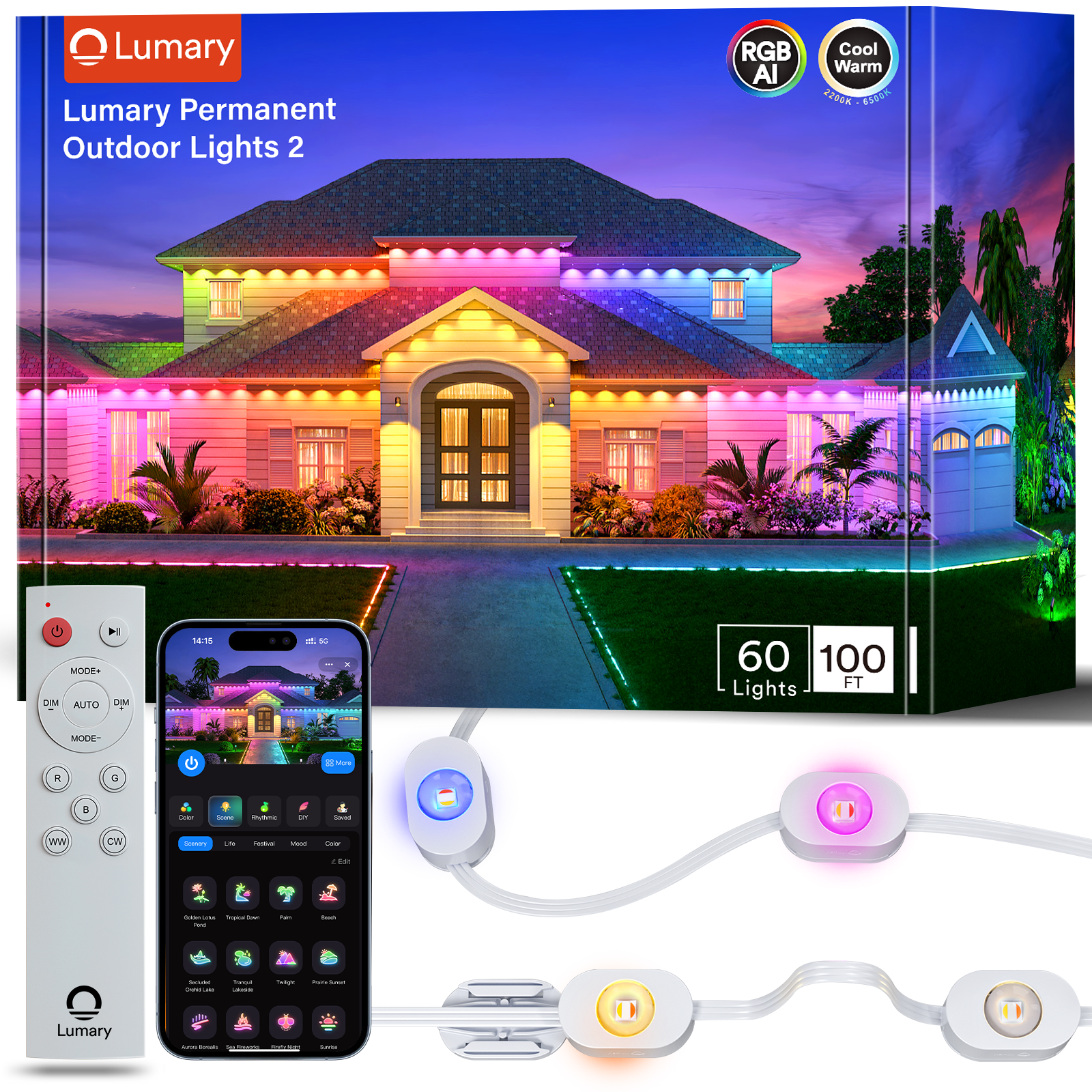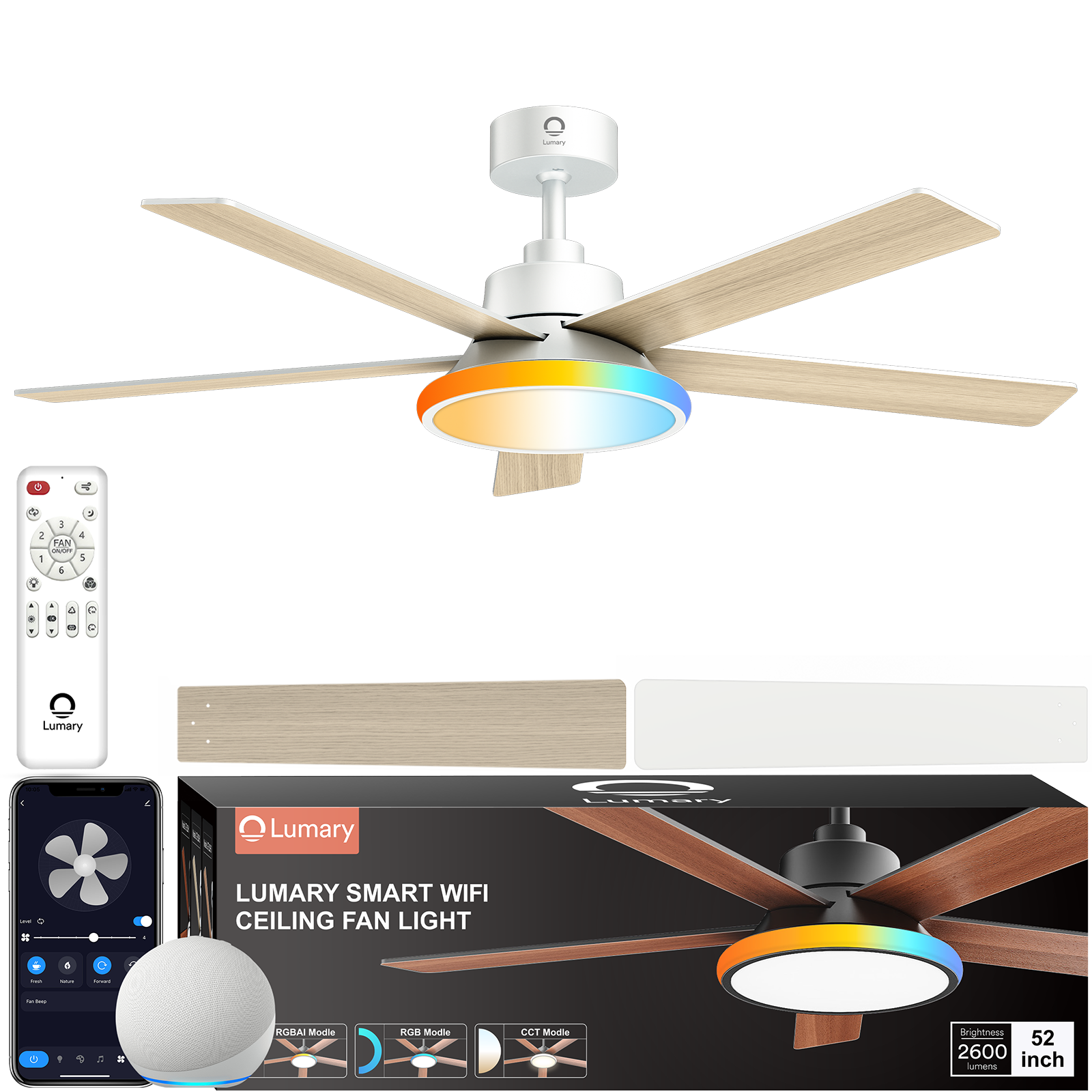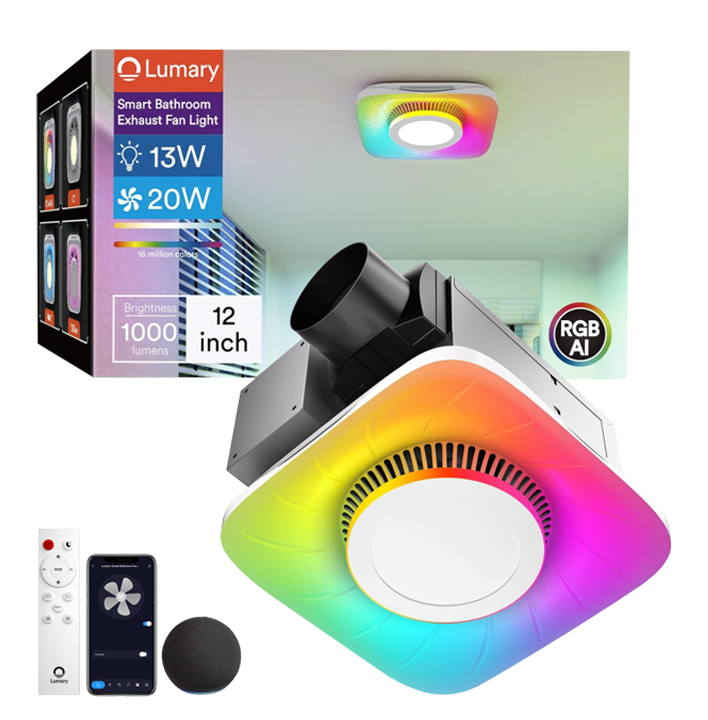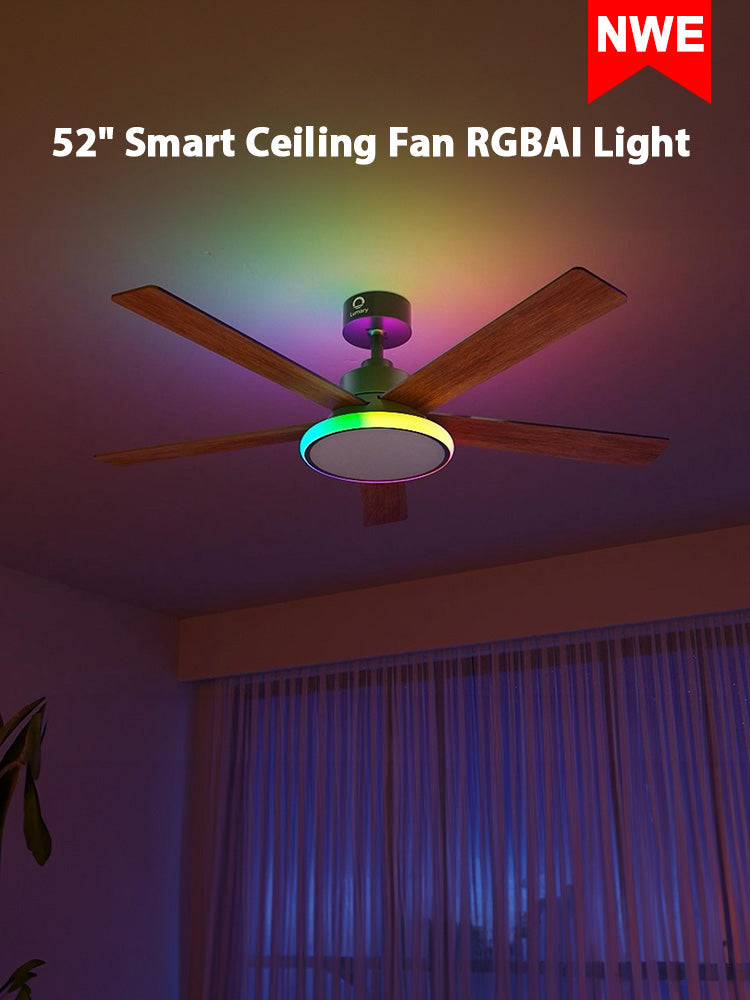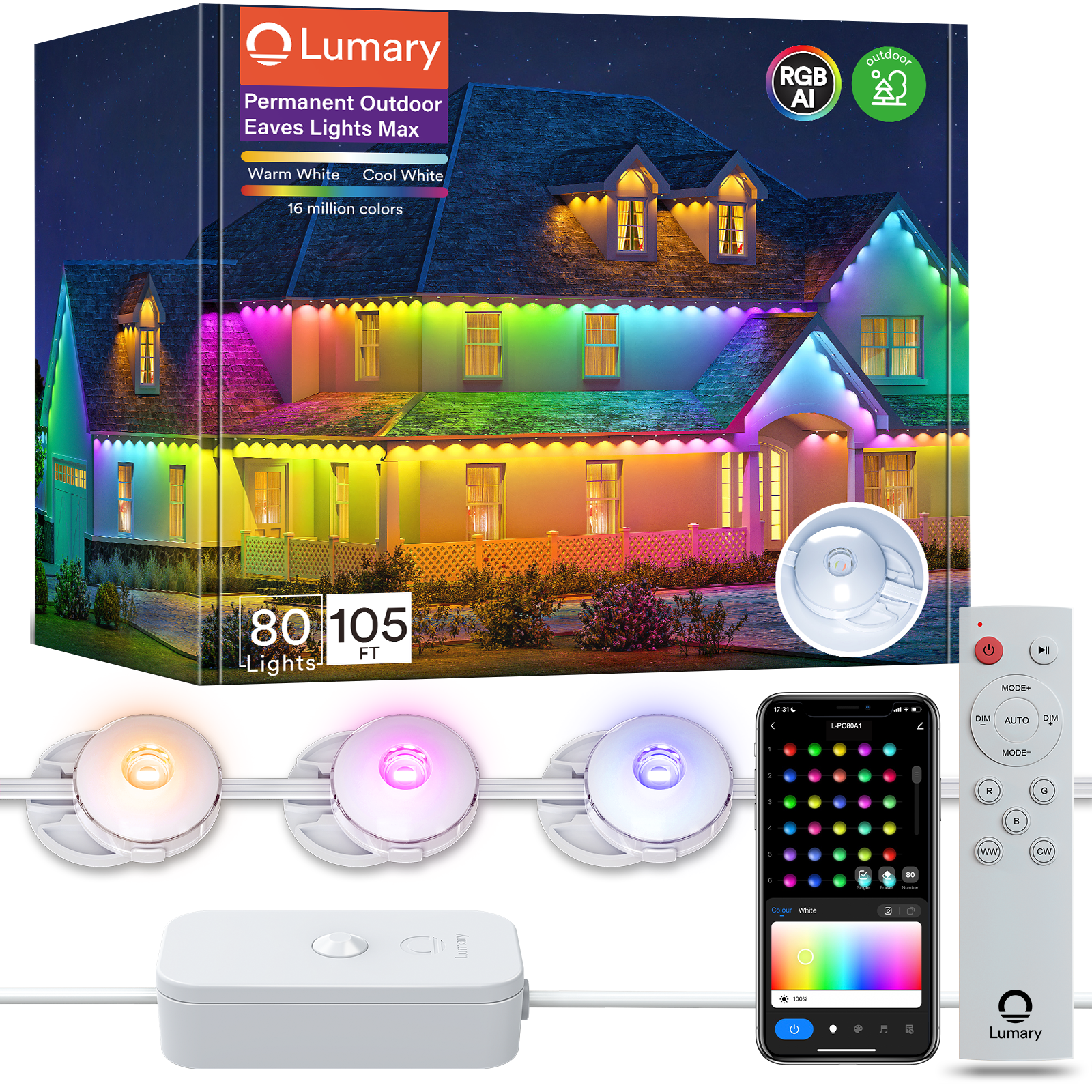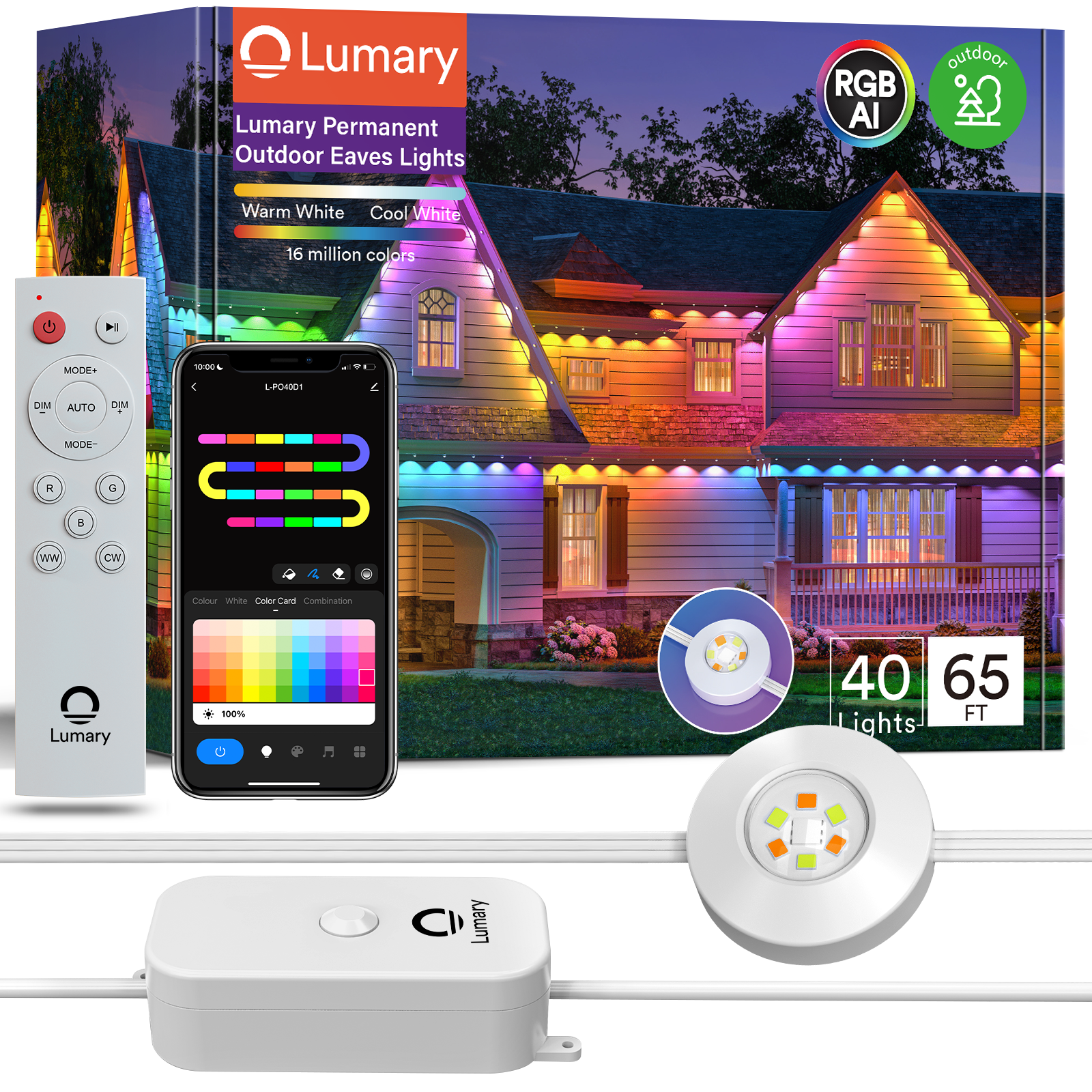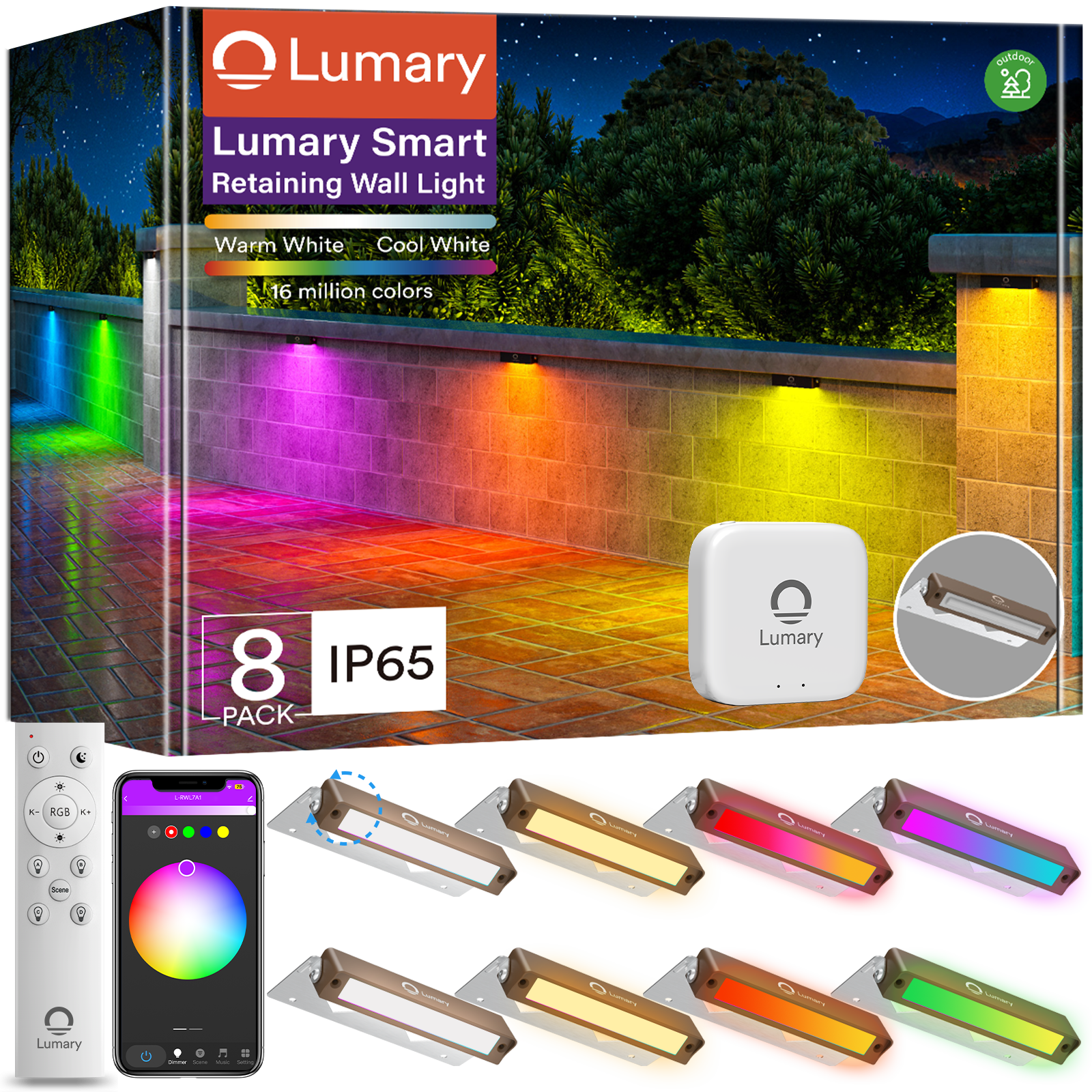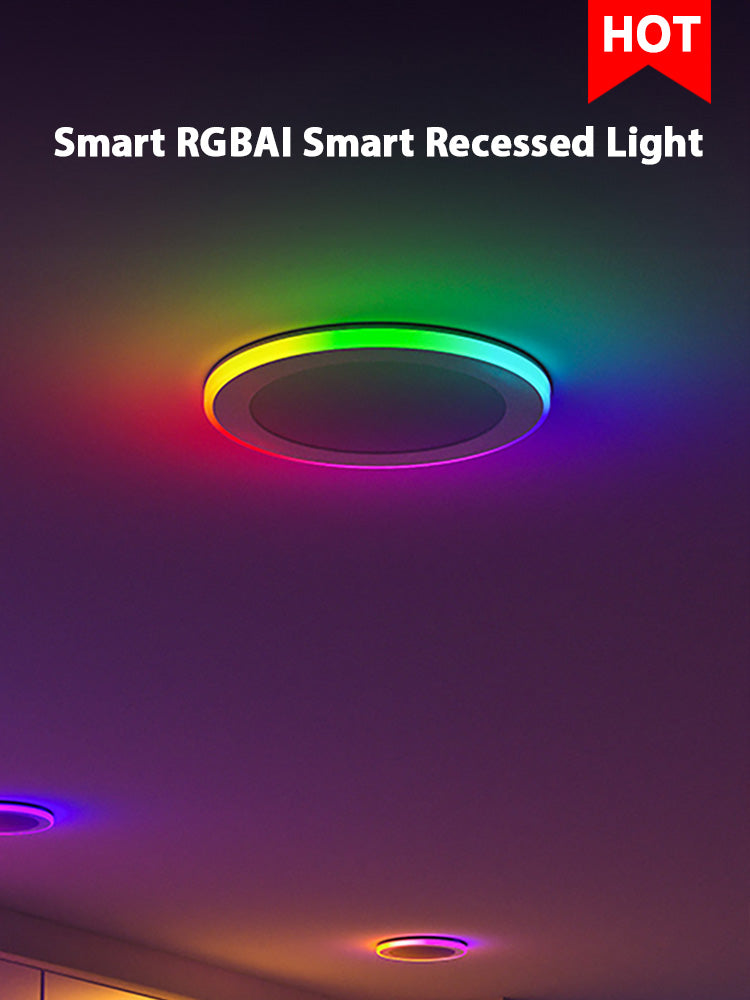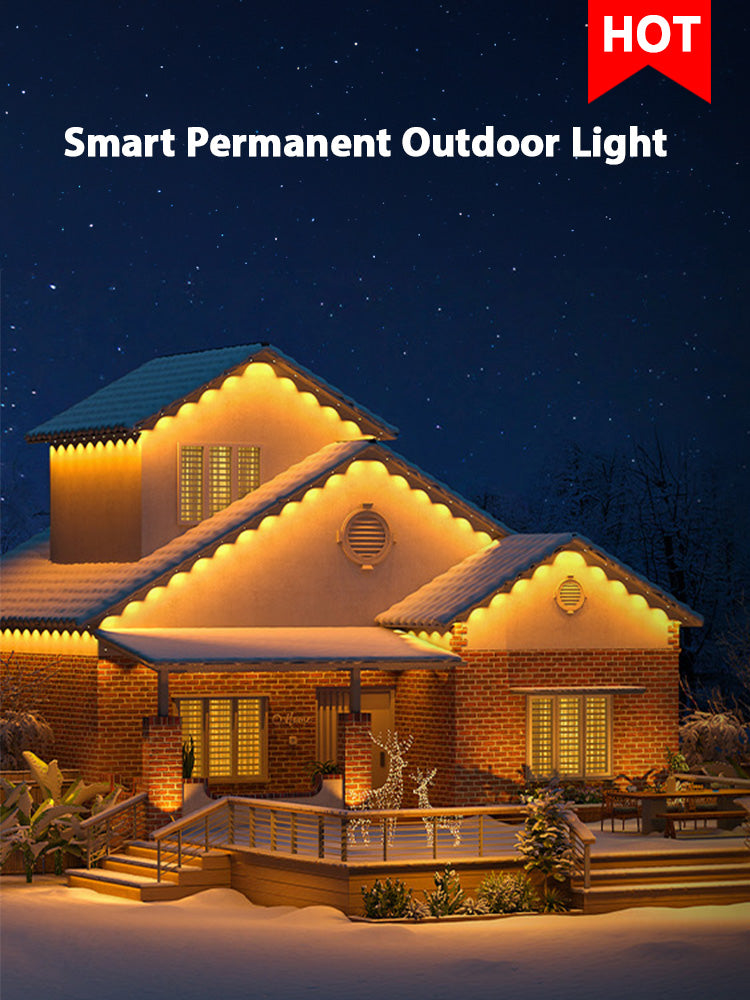LED outdoor floodlights bring a perfect mix of functionality and style to your space. They consume far less energy than traditional bulbs, helping you save on electricity bills while reducing your carbon footprint. With a lifespan of up to 50,000 hours, these lights last much longer, cutting down on replacement costs. Beyond efficiency, they enhance security by brightly illuminating large areas, deterring potential intruders. Studies even show that proper outdoor lighting can reduce crime by up to 39%. Whether you're upgrading your home's safety or creating a welcoming ambiance, LED floodlights are a smart choice for any outdoor setting.
Key Takeaways

-
LED outdoor floodlights are energy-efficient, lasting up to 50,000 hours, which reduces both electricity bills and replacement costs.
-
Identify the purpose of your lighting—whether for security, ambiance, or highlighting features—to choose the right floodlight for your needs.
-
Ensure your floodlights are weatherproof with an IP65 rating or higher to withstand outdoor conditions and minimize maintenance costs.
-
Utilize smart features like app control and scheduling to enhance convenience and energy efficiency in your outdoor lighting setup.
-
Follow safety precautions during installation, such as turning off power and using waterproof connectors, to prevent accidents and ensure longevity.
-
Regular maintenance, including cleaning and inspecting for damage, is essential to keep your LED floodlights functioning optimally for years.
-
Adjust the position and angle of your floodlights after installation to maximize coverage and eliminate dark spots in your outdoor space.
Choosing the Right LED Outdoor Floodlight
Selecting the perfect LED floodlight for your outdoor space can feel overwhelming with so many options available. By focusing on your specific needs and understanding key features, you can confidently choose the right LED flood light that enhances your outdoor security lighting and aesthetics.
Determine the Purpose of Your Lighting
Start by identifying why you need floodlights. Are you looking to improve outdoor security lighting, highlight landscaping, or brighten up a patio for evening gatherings? For security, opt for floodlights with high brightness and wide coverage. If you want to create a cozy ambiance, consider models with adjustable color temperatures or RGB options. For example, Lumary Smart Retaining Wall Lights offer customizable colors and brightness, making them ideal for decorative purposes. Knowing your purpose helps narrow down your choices and ensures you pick a light that meets your goals.
Evaluate Brightness, Wattage, and Color Temperature
Brightness and wattage play a significant role in how well your floodlights perform. Higher wattage lights, like a 600 Watt LED Flood Light, deliver intense illumination, perfect for large areas. For smaller spaces, lower wattage options, such as 10W-40W LED floodlights, provide sufficient brightness while saving energy.
Color temperature also matters. A warm 2200K light creates a relaxing atmosphere, while a cooler 5000K light offers crisp, daylight-like brightness. Some high-quality LED flood lights, like those from Litetronics, even allow you to adjust the color temperature, giving you flexibility for different occasions. Always check the lumens rating to ensure the light output matches your needs.
Check for Weatherproof and Durability Features
Outdoor floodlights must withstand harsh weather conditions. Look for models with an IP65 or higher waterproof rating to ensure durability. Materials like aluminum or stainless steel enhance longevity and resist rust. For instance, the Lumary Smart Retaining Wall Light combines robust aluminum construction with weatherproofing, making it a reliable choice for any outdoor setting. Durable floodlights save you money in the long run by reducing maintenance and replacement costs.
By focusing on these factors, you can confidently choose the right LED flood light for your outdoors. Whether you prioritize energy efficiency, brightness, or durability, there’s a perfect option to meet your needs.
Explore Additional Features Like Smart Controls
Modern LED floodlights come packed with smart features that make your outdoor lighting setup more convenient and efficient. These advanced options not only enhance functionality but also give you greater control over your lighting experience.
1. Remote and App-Based Control
Many LED floodlights now offer app-based or remote control options. With these, you can adjust brightness, change colors, or turn the lights on and off without leaving your seat. For example, the Lumary Smart Retaining Wall Light allows you to manage your lighting through the Lumary app or even voice commands via Alexa or Google Assistant. This feature is perfect for creating the right ambiance for any occasion, whether you're hosting a party or enjoying a quiet evening outdoors.
2. Customizable Color Options
Smart LED floodlights often include RGB capabilities, giving you access to millions of color combinations. You can switch between warm tones for a cozy vibe or vibrant hues for a festive atmosphere. The Lumary Smart Retaining Wall Light offers 16 million RGB colors, letting you tailor your lighting to match your mood or event. This level of customization transforms your outdoor space into a dynamic and versatile area.
3. Scheduling and Automation
Imagine your outdoor lights turning on automatically at sunset and switching off at sunrise. Many smart floodlights come with scheduling features that let you set specific times for your lights to operate. This not only saves energy but also adds an extra layer of security by ensuring your property is always well-lit when needed. The Lumary app, for instance, allows you to create schedules for automatic on/off times, making your lighting setup hassle-free.
4. Music Synchronization
Some smart floodlights take entertainment to the next level with music synchronization. This feature makes your lights "dance" to the rhythm of your favorite songs, creating a lively and immersive experience. Whether you're hosting a backyard barbecue or celebrating a special occasion, this feature adds a fun and interactive element to your outdoor lighting.
5. Energy Efficiency with Smart Features
Smart controls also contribute to energy efficiency. By dimming the lights or using motion sensors, you can reduce energy consumption without compromising on illumination. Products like the 600 Watt LED Flood Light, which already offer significant energy savings, become even more efficient when paired with smart features.
"LED floodlights with smart controls combine convenience, customization, and energy efficiency, making them a must-have for modern outdoor spaces."
By exploring these additional features, you can elevate your outdoor lighting experience. Smart controls not only simplify your life but also add a touch of innovation and style to your home.
Preparing to Install Outdoor Floodlights
Proper preparation is the key to a smooth and successful installation. Before you begin, make sure you have everything you need and take the time to plan carefully. This will save you time and help you avoid unnecessary mistakes.
Gather Essential Tools and Materials
To start, collect all the tools and materials required for the installation. Having everything ready ensures you won’t need to pause midway through the process. Here’s a checklist to guide you:
-
Tools: Screwdriver, drill, wire strippers, and a ladder.
-
Materials: Mounting brackets, screws, anchors, waterproof connectors, and wire nuts.
-
Safety Gear: Insulated gloves and safety goggles.
If you’re installing smart floodlights, like Smart Floodlights, ensure you have access to a smartphone or remote control for setup. These lights often integrate with home automation systems, so having your Wi-Fi network details handy can also be helpful.
"Preparation is half the battle. Gathering the right tools and materials upfront makes the installation process much easier."
Plan the Installation Location
Choosing the right location for your floodlights is crucial for achieving optimal lighting. Think about the areas you want to illuminate and the purpose of the lighting. For example:
-
Place floodlights at floodlight locations like building corners or near roofs to maximize coverage.
-
Install lights near high-traffic areas such as pathways, driveways, or entryways for added security.
-
Mount the lights at a height of 8 to 12 feet to ensure wide and even illumination.
If you’re using smart floodlights, consider locations where they can connect easily to your home’s Wi-Fi. This ensures seamless control through apps or voice commands. Planning the location carefully not only enhances functionality but also improves the overall look of your outdoor space.
Follow Safety Precautions Before Starting
Safety should always come first when working with electrical installations. Before you begin, take these precautions to protect yourself and ensure a safe setup:
-
Turn Off Power: Switch off the power supply to the area where you’ll be working. This prevents accidental shocks.
-
Inspect the Area: Check for any existing wiring or obstacles that might interfere with the installation.
-
Use Waterproof Connectors: Ensure all electrical connections are sealed with waterproof connectors to prevent damage from moisture.
-
Secure Your Ladder: If you’re working at a height, make sure your ladder is stable and positioned on a flat surface.
By following these steps, you minimize risks and set yourself up for a safe and efficient installation process. Remember, taking a few extra minutes to prioritize safety can save you from potential hazards later.
"Safety isn’t just a step—it’s the foundation of every successful installation."
Step-by-Step Installation of LED Flood Lights

Installing LED flood lights can seem like a daunting task, but with the right approach, it becomes a manageable and rewarding project. Follow this step-by-step installation guide to ensure your outdoor space is well-lit and secure.
Mark and Prepare the Mounting Location
Start by identifying the exact spot where you want to install your floodlight. Choose a location that provides optimal lighting coverage for the area. Corners of buildings, near roofs, or high-traffic zones like pathways and driveways are excellent choices. Use a measuring tape to ensure the height is between 8 to 12 feet, as this range offers the best illumination.
Once you've decided on the spot, mark the mounting holes using the floodlight fixture as a template. A pencil or marker works well for this. Double-check the alignment to ensure the light will be positioned correctly. After marking, drill holes into the surface for the screws or anchors. If you're mounting on a concrete or brick wall, use appropriate anchors to secure the fixture firmly.
Pro Tip: Always inspect the area for obstacles like existing wiring or pipes before drilling. This precaution prevents accidental damage and ensures a smooth installation process.
Connect the Wiring Safely
Before starting the wiring process, turn off power to the area where you'll be working. This step is crucial for your safety and prevents electrical accidents. Use a voltage tester to confirm that the power is completely off.
Locate the wires from your floodlight fixture and the power source. Typically, you'll find three wires: live (black), neutral (white), and ground (green or bare copper). Match these wires with the corresponding ones from your power source. Use wire strippers to remove about half an inch of insulation from each wire, then twist the ends together. Secure the connections with waterproof wire nuts to protect them from moisture.
If you're installing smart LED flood lights, ensure the wiring and electrical connections are compatible with your home's system. Some models may require additional steps, like connecting to a Wi-Fi network during the setup process.
Safety Reminder: Waterproof connectors are essential for outdoor installations. They shield the wiring from rain and humidity, extending the lifespan of your floodlight.
Mount the LED Floodlight Fixture
With the wiring complete, it's time to mount the fixture. Align the floodlight with the pre-drilled holes and secure it using screws or bolts. Tighten them firmly to ensure the fixture stays in place, even in harsh weather conditions. If your floodlight comes with an adjustable bracket, position it at the desired angle before fully tightening the screws.
After mounting the fixture, connect power to the fixture by turning the electricity back on. Test the floodlight to ensure it functions correctly. Adjust the angle and direction of the light to achieve the best coverage for your outdoor area.
Quick Tip: If your floodlight includes smart features, use the app or remote control to fine-tune the settings, such as brightness or color temperature, after mounting the fixture.
By following these steps, you can install outdoor floodlights efficiently and safely. Proper preparation, careful wiring, and secure mounting ensure your lighting setup performs optimally for years to come.
Test the Floodlight for Proper Functionality
Once you've mounted your LED floodlight, testing it ensures everything works as expected. This step confirms that your installation is successful and helps you identify any adjustments needed for optimal performance. Follow these simple steps to test your floodlight effectively.
-
Turn the Power Back On
Head to your circuit breaker or power switch and restore electricity to the area where you installed the floodlight. Make sure the light turns on immediately. If it doesn’t, double-check your wiring connections and ensure the power source is active. -
Inspect the Light Output
Observe the brightness and coverage of the floodlight. Does it illuminate the intended area evenly? If the light appears dim or flickers, check the bulb or LED panel for any issues. For smart floodlights, use the app or remote control to adjust brightness levels and verify functionality. -
Test Additional Features
If your floodlight includes smart features, now’s the time to explore them. Use the app to change colors, set schedules, or activate motion sensors. For example, with the Lumary Smart Retaining Wall Light, you can test RGB color options or sync the lights to music. Ensure all features respond correctly to your commands. -
Check for Stability
Look at the fixture to ensure it’s securely mounted. A loose floodlight may shift or fall over time, especially in harsh weather. Tighten screws or brackets if necessary to keep the light stable. -
Adjust the Angle
Use the adjustable bracket to position the floodlight at the perfect angle. Aim it to cover high-traffic areas like pathways or driveways. Avoid pointing it directly into neighbors’ windows or creating glare that could reduce visibility.
Pro Tip: Test the floodlight at night to see how well it performs in real conditions. This gives you a clear idea of its coverage and brightness.
-
Verify Weatherproofing
If your floodlight is exposed to the elements, inspect the waterproof connectors and seals. Ensure no wires are exposed and that the fixture is tightly secured to prevent water damage.
By thoroughly testing your floodlight, you can enjoy peace of mind knowing your outdoor lighting setup is reliable and efficient. Taking a few extra minutes to check functionality ensures your floodlight performs at its best for years to come.
Adjusting Outdoor LED Flood Lighting for Optimal Results
Once your LED floodlights are installed, fine-tuning their position and coverage ensures you get the best results. Proper adjustments not only enhance the functionality of your lights but also improve the overall appearance of your outdoor space. Follow these steps to make sure your outdoor LED flood lighting performs at its peak.
Position and Angle the Floodlight Correctly
Positioning your floodlight at the right angle is crucial for achieving even and effective illumination. Start by evaluating the area you want to light up. Whether it’s a driveway, patio, or garden, the goal is to cover the space without creating glare or leaving dark spots.
Here’s how you can adjust the position and angle effectively:
-
Set the Height: Mount your floodlight at a height between 8 to 12 feet. This range provides wide and balanced coverage while minimizing harsh shadows.
-
Adjust the Angle: Tilt the floodlight downward at an angle that illuminates the target area without shining directly into people’s eyes or neighboring properties. A slight downward tilt works best for most outdoor spaces.
-
Focus on High-Traffic Areas: Aim the light toward pathways, driveways, or entryways to enhance safety and visibility. For decorative purposes, direct the light toward landscaping features or architectural elements.
Pro Tip: Use the adjustable bracket on your floodlight to experiment with different angles. Small changes can make a big difference in how the light spreads across your outdoor area.
By carefully positioning and angling your floodlight, you can maximize its efficiency and create a well-lit, inviting environment.
Test the Lighting Coverage at Night
Testing your outdoor LED flood lighting at night is the best way to evaluate its performance. Darkness allows you to see how well the light covers the intended area and whether any adjustments are needed.
Follow these steps to test your lighting setup:
-
Turn On the Floodlight: Power up your floodlight and observe how it illuminates the space. Check for any uneven lighting or overly bright spots.
-
Walk Around the Area: Move through the lit space to identify any dark corners or areas that need more coverage. Pay attention to high-traffic zones like walkways or seating areas.
-
Check for Glare: Stand at different angles to ensure the light doesn’t create glare or discomfort. If you notice glare, adjust the angle of the floodlight slightly downward.
-
Evaluate Decorative Lighting: If you’re using the floodlight for ambiance, assess how it highlights landscaping or architectural features. Adjust the color temperature or brightness if your floodlight has customizable settings.
Quick Tip: For smart floodlights, use the app to fine-tune brightness, colors, or schedules during your nighttime test. This ensures your outdoor lighting setup meets both functional and aesthetic needs.
Testing your floodlight at night helps you identify and fix any issues before they become a problem. It also ensures your outdoor lighting enhances safety, security, and style.
Maintenance Tips for LED Flood Lights Longevity
Keeping your LED flood lights in top condition ensures they perform efficiently and last for years. Regular maintenance not only enhances their functionality but also saves you money on replacements. Here’s how you can take care of your floodlights to maximize their lifespan.
Clean the Floodlight Regularly
Dirt, dust, and debris can accumulate on your floodlight over time, reducing its brightness and effectiveness. Cleaning it regularly helps maintain optimal lighting performance. Use a soft, damp cloth to wipe the surface of the light. Avoid harsh chemicals that might damage the protective coating.
For stubborn dirt, a mild soap solution works well. Gently scrub the surface and rinse with clean water. If your floodlight is mounted high, use a stable ladder and ensure your safety while cleaning. Keeping the lens clear ensures the light beam remains bright and focused.
Tip: Clean your LED flood lights every few months or after heavy storms to prevent buildup and maintain their efficiency.
Inspect for Damage and Replace Parts as Needed
Outdoor conditions can take a toll on your floodlight. Regularly inspect it for signs of wear and tear, such as cracks in the casing, loose screws, or frayed wires. Damaged parts can compromise the light’s performance and safety.
If you notice any issues, address them promptly. Replace broken components like lenses or brackets to keep the floodlight secure and functional. For wiring problems, consult a professional electrician to ensure safe repairs. Regular inspections help you catch small problems before they become costly repairs.
Pro Tip: After severe weather, check your LED flood lights for damage. This quick step can prevent long-term issues and keep your lighting system reliable.
Upgrade Features for Enhanced Performance
Technology evolves quickly, and upgrading your floodlight’s features can improve its performance and convenience. Consider adding smart controls if your current setup doesn’t have them. Features like app-based control, motion sensors, or RGB lighting can enhance your outdoor lighting experience.
For example, upgrading to a floodlight with adjustable color temperatures allows you to customize the ambiance for different occasions. Motion sensors improve security by activating the light only when needed, saving energy. These upgrades not only modernize your lighting system but also make it more efficient and user-friendly.
Did You Know? Many modern LED flood lights come with energy-saving features that reduce electricity consumption while maintaining brightness.
By following these maintenance tips, you can ensure your LED flood lights stay in excellent condition. Regular cleaning, timely repairs, and thoughtful upgrades will keep your outdoor space well-lit and secure for years to come.
Installing LED outdoor floodlights transforms your space into a safer, more inviting environment while boosting energy efficiency. By following the step-by-step guide, you ensure a smooth installation process and achieve optimal lighting results. Adjusting the angle and position of your floodlight enhances coverage and eliminates dark spots, creating a well-lit area tailored to your needs. Regular maintenance, like cleaning and inspecting for damage, keeps your lights performing at their best for years. With the right preparation and care, you’ll enjoy the perfect balance of functionality and style in your outdoor lighting setup.
FAQ
How do I know if it’s time to upgrade my LED flood lights?
You should consider upgrading your LED floodlights if they no longer provide the brightness you need or if they show signs of wear, such as cracked lenses or exposed wiring. Regular inspections can help you spot these issues early. Upgrading to newer LED models can also improve energy efficiency and offer advanced features like smart controls.
Tip: Modern LED floodlights, like the Lumary Smart Retaining Wall Light, combine durability with customizable features, making them a great choice for an upgrade.
Is it normal for LED floodlights to dim over time?
Yes, LED floodlights may dim slightly as they age, but this process happens very slowly compared to traditional bulbs. If you notice significant dimming, it could indicate dirt buildup on the lens or an issue with the wiring. Regular cleaning and maintenance can help maintain optimal brightness.
Keep your floodlights shining bright by cleaning the fixtures every few months and checking for any wiring issues.
What should I do if my LED floodlights are flickering?
Flickering lights often result from loose wiring, voltage fluctuations, or a faulty fixture. Start by turning off the power and inspecting the wiring connections. Tighten any loose wires and ensure they’re securely connected. If the problem persists, consult a professional electrician to diagnose the issue.
Pro Tip: Using waterproof connectors during installation can prevent moisture-related flickering issues.
What should I do if water gets inside my LED flood lights?
Water inside your floodlight can damage the internal components and reduce its lifespan. Turn off the power immediately and remove the fixture. Dry it thoroughly and inspect for any damage. Replace any compromised parts before reinstalling. To prevent this in the future, ensure all connections are sealed with waterproof connectors and consider using outdoor covers during extreme weather.
Quick Fix: Investing in floodlights with a high IP65 waterproof rating can help avoid water damage.
How can I extend the lifespan of my LED floodlights?
Regular maintenance is key to extending the life of your LED floodlights. Clean the fixtures to remove dirt and dust, tighten any loose screws or brackets, and inspect the wiring for wear or damage. Address any issues promptly to prevent further problems. Additionally, consider upgrading to energy-efficient models that require less maintenance.
A little care goes a long way. Well-maintained floodlights can last for years without losing performance.
Can I install LED floodlights myself, or should I hire a professional?
You can install LED floodlights yourself if you’re comfortable working with basic tools and electrical wiring. Follow safety precautions, such as turning off the power and using insulated gloves. However, if you’re unsure about the wiring or installation process, hiring a professional ensures a safe and efficient setup.
Reminder: Always prioritize safety when working with electricity. If in doubt, call an expert.
How do I choose the right brightness for my outdoor space?
The brightness of your floodlight depends on the size and purpose of the area you want to illuminate. For large spaces like driveways or backyards, opt for higher wattage and lumens. Smaller areas, such as patios or pathways, work well with lower wattage options. Adjustable brightness settings, like those in smart floodlights, give you flexibility for different occasions.
Did You Know? A 600-watt LED floodlight provides intense illumination, while a 10W-40W option is perfect for smaller spaces.
Are smart LED floodlights worth the investment?
Smart LED floodlights offer convenience, energy efficiency, and advanced features like app-based control, motion sensors, and customizable colors. They allow you to create the perfect ambiance for any occasion and enhance security with automated schedules. While they may cost more upfront, their long-term benefits make them a worthwhile investment.
Smart floodlights, like the Lumary Smart Retaining Wall Light, elevate your outdoor lighting experience with innovative features.
How often should I clean my LED floodlights?
Cleaning your floodlights every few months keeps them performing at their best. Remove dirt, dust, and debris from the lens to maintain brightness. After heavy storms, inspect and clean the fixtures to prevent buildup that could affect performance.
Tip: Use a soft, damp cloth and avoid harsh chemicals to protect the light’s coating.
What are the benefits of upgrading to LED floodlights?
Upgrading to LED floodlights offers numerous benefits, including energy efficiency, longer lifespan, and brighter, more consistent lighting. LEDs consume less power, reducing electricity bills, and require less maintenance compared to traditional bulbs. Many modern LED floodlights also come with smart features, enhancing convenience and functionality.
Key Takeaway: LED floodlights are a cost-effective and eco-friendly solution for outdoor lighting.

